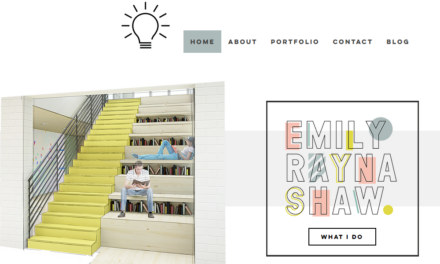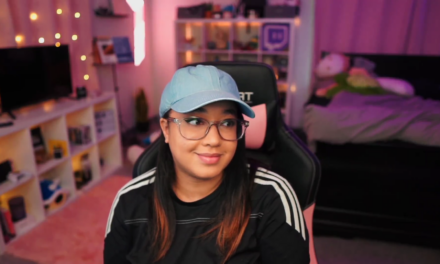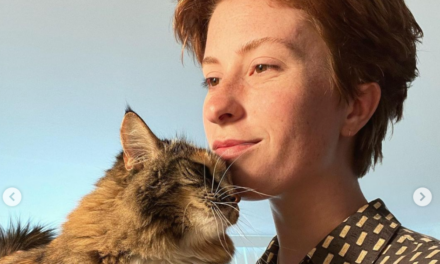
APRIL 20, 2021
full tilt
What’s the Difference Between a Content Creator and a Content Entrepreneur?
What’s the news?
A confluence of the explosive gig economy and the growing creator economy is happening.
It’s a second renaissance for content creators, according to Patreon CEO John Conte: “We are literally at the beginning of a new renaissance, a world in which tens of millions of creative people are building businesses and building their dreams and making it happen.”
Isn’t the gig economy like ride-sharing drivers?
Yes, Uber and Lyft drivers get the headlines. But the gig economy is much bigger. It’s really any short-term, contractual work. One estimate says creatives make up the largest group at 14% (Forbes).
What’s the creator economy?
“It’s the class of businesses centered around independent content creators, curators, and community builders including social media influencers, bloggers, and videographers,” according to SignalFire.
How big is the creator economy?
Only 4% (2M) of the estimated 50M content creators are professionals, according to SignalFire. But “professional” by those standards only means making some money.
The Tilt Talk and Advice
What’s the tilt?
Being a content gig worker – getting paid to create content such as freelancers or social media accounts with intermittent ad revenue – is good. Being a content entrepreneur is better.
Are you a content gig worker?
If you’re thrilled to reach 10K followers on YouTube and even more excited to get $100 in ad revenue from those videos, you’re a gig creator or a hobbyist creator.
If you operate as a freelancer whose income depends on clients contracting with you to create the content for them, you’re a content gig worker.
Are you a content entrepreneur?
If your goal is to build and grow an audience through content and eventually make money from that content, you are a content entrepreneur, according to our definition at The Tilt.
As SignalFire explains: “The job has come to encompass product management, design, community engagement, e-commerce, and data science along with being an entertainer.”
What one thing should a content entrepreneur-to-be do?
You should focus on a niche audience and spend every day understanding what that audience needs and wants.
What one thing should an experienced content entrepreneur do?
Ensure you’re developing and following a set of processes to make your content success repeatable and scalable.
What’s the future for content entrepreneurship?
It’s the fastest-growing new business sector, according to The Tilt founder Joe Pulizzi: “These individuals will build massive audiences and monetize those audiences in dozens of ways. They will not only make money as media companies do, but they will sell products and services if they wish.”
As Patreon’s CEO John Conte explains: “People are starting to realize that creativity is a real, viable, sustainable life for people. And that’s a sea change in the world.”
– Ann Gynn
To learn more about the content business community and two more things every content entrepreneur should be doing, read the longer story.
Wally Koval ‘Accidentally’ Gets into Content Business
Entrepreneur: Wally Koval
Biz: Accidentally Wes Anderson
Tilt: Travel stops that look like they could be in a Wes Anderson movie
Channel: Instagram Followers: 1.4M
Money Business: Time to first dollar – nine months; time to leaving 9-to-5 – 2.5 years
Rev Streams: Brand partnerships, book, merch
Marketing Mix: Word of mouth, media coverage
The Tilt’s Favorite Actionable Advice
- Be consistent: Set an expectation with your audience. Though Wally hasn’t missed a day in three years, fans speak up when he doesn’t post at his usual time.
- Have conversations, not posts: Talking with your community is better than posting at your community.
- Create a big vision: Wally wants to build a brand that everybody wants a T-shirt of
Some of the Story:
A fan of filmmaker Wes Anderson, Wally Koval loved to view images that looked like they could be in one of his movies. As a fan of travel, he wanted to visit the places in the images. But the captions didn’t say where they were. So Wally started posting one picture with a helpful caption every day to Instagram.
As his followers grew, Wally added even more locally relevant hashtags and posted submissions sent by fans of Wes Anderson and Wally’s Instagram account. Major international tourist boards and media companies began following him. And after reaching around 3,000 followers, Wally switched his Insta handle and Accidentally Wes Anderson was born.
In the past four years, Accidentally Wes Anderson has become a brand. In 2020, Wally published a bestselling book of the same name. The AWA website now is a searchable destination for adventurers. And it even has its own merch.
And Instagram? He’s still posting every day.
– Joe Pulizzi
All the Story: To learn more about Wally Koval, the content entrepreneur, and Accidentally Wes Anderson, the content business, check out the longer story. They’re also featured in the newest edition of the Content Inc. book this May. Pre-order today.
Know a content creator who’s going full tilt? DM us or email ann@thetilt.com.
quick talk
Caught on … Twitter
“I’ve relentlessly obsessed over my videos every day for a decade and reinvested every single dollar back into the channel.” – Mr.Beast
things to know
Money
- Send money soon: Within a few weeks, Clubhouse expects all creators will be able to accept donations. The rapid evolution of its pilot program means creators can soon add a payment option to your Clubhouse profiles. Even better? Clubhouse doesn’t take a cut. (TechCrunch)
- Newsletters go native: Consider programmatic native ads for your newsletter revenue stream. They’re less disruptive because the format and content are designed to fit with what your subscribers are consuming. How do you get the bigger dollars? Grow your subscriber base. Increase your open and ad click-through rates. That’s what matters to advertisers. (Business 2 Community)
Audiences
- More eyes in 2021: YouTube and Reddit saw double-digit user growth between 2019 and 2021 in the US. But social platforms Facebook, Instagram, Pinterest, Twitter, Snapchat, and TikTok saw little to no growth. The top three remain the same: YouTube (81%), Facebook (69%), and Instagram (40%). (Pew Research)
- Roll out the welcome: When someone buys your content, don’t stop at a simple thank you. Create a reward bundle for paid subscribers to give them something after signing up. (Hypebot)
Tech and Tools
- Do you like this better?: It doesn’t look like Instagram plans to go further with its pilot program to remove public-facing like counts. Under its new test, users have more control over what they see or don’t see. So, keep your likes – your social proof – visible to anyone who wants to see them. (Verge)
- Attention Feedburners: Google’s getting rid of its subscription service feature in Feedburner on July 1. Users of the service should download their email subscribers and find a new service soon. (Google Search Central)
And Finally
- Beyond advertising: A prediction from Tim Hwang: “An internet that doesn’t rely on advertising means we’ll see more innovative business models.” We at The Tilt see content entrepreneurs as the ideal group to thrive in a non-advertising world. (And expect more love from brands too.) (Science Focus)
- Pacifiers for brains: That’s what Instagram Stories can do. The storytelling “fuels new levels of compulsion.” And their brevity makes them even more compelling than Netflix binging. (healthline)
we’re a stan for Special Books by Special Kids
Teacher Chris Ulmer and his students wanted to share what life was like living with disabilities/neurodiversities. No publishers were interested in their book idea. So they started creating videos.
Six years later, Special Books by Special Kids is a multimedia experience that has netted over 2 billion views on social. Chris and his wife Alyssa Porter formed the nonprofit fives years ago – the same year Chris left his teaching job to work full time on SBSK.
While direct donations are possible on their website, SBSK has a Patreon community (2,100+ patrons, $11,000 monthly revenue). “The SBSK Patreon will allow us to create video interviews free from the dependency on social media platforms and their ever-changing policies,” Chris and Alyssa write. (That’s music to The Tilt’s ears.)
Check out Special Books by Special Kids: YouTube (2.97M), Facebook (3.6M), Instagram (672K), Patreon (2.1K)
Tilt Takeaway: Don’t let your business’ future depend on gatekeepers. With powerful storytelling, you can grab – and grow – an audience and do incredible things.
the business of content
Content entrepreneurs with large audiences can afford to focus on one revenue source, but the creator middle class needs to diversify to survive. Hear what Joe Pulizzi, founder of The Tilt, has to say in his weekly podcast, Content Inc. (It’s worth the five minutes.)
Interesting behavior on social media. Pew Research reports the number of young adults (18 to 29) who use TikTok is about half of those who use Instagram (71%) and Snapchat (65%). In the latest This Old Marketing, Joe and Robert Rose talk about other research that says Instagram is trending down for kids and the long-term implications.
flex your tilt
We’re launching this feature soon. But we need your help. Let us know who to feature (self-nominations are encouraged). Use #TheTilt. DM us. Or email Ann@TheTilt.com.
the tilt team
Your team for this issue: Joe Pulizzi, Ann Gynn, Laura Kozak, Dave Anthony, and Mackenzie Pippin
we need your help
If you create content, please complete this 7-minute survey and get a chance to win some Bose Soundlink headphones.
Get more of the Full Tilt stories on TheTilt.com.
Know a content creator who’s going full tilt? DM us. Old school? Email ann@thetilt.com
Was this email forwarded to you? Get your own sub here.
Copyright ©2021 Tilt Media LLC All rights reserved.
Unsubscribe | Update your profile | 17040 Amber Drive, Cleveland, OH 44111






